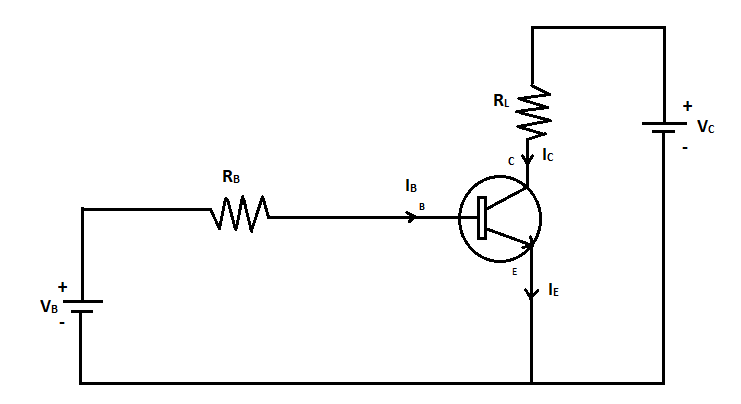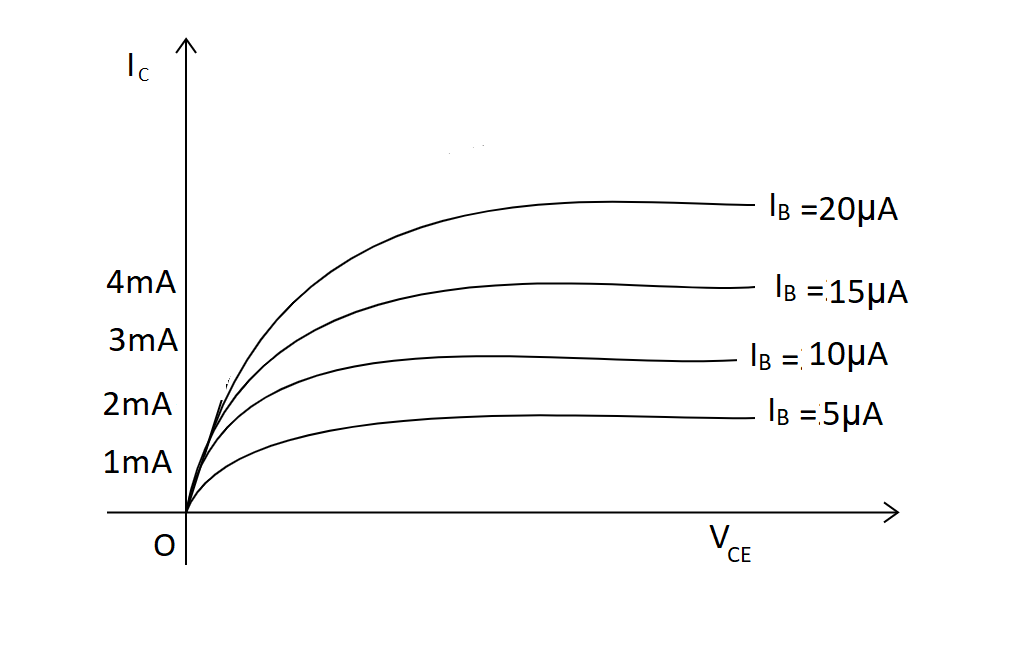
Draw the circuit diagram of the NPN transistor in a common emitter configuration. Hence describe the working method to obtain the output characteristic curve.
Answer
142.8k+ views
Hint: A junction transistor is a semiconductor device that can amplify electrical signals and produce electrical oscillations. There are two types of transistors. One is called a PNP transistor and the other is called an NPN transistor. In an NPN transistor, a thin layer of p-type semiconductor is sandwiched between two n-type semiconductors.
Complete step by step solution:
The circuit diagram of NPN transistor in common emitter configuration is given below

Working:
Here the base and the collector are connected to the positive terminals of the cell and the emitter is connected to the negative terminal of the cell. The electrons from the emitter flow towards the base resulting in an emitter current
As the collector current depends on the base current, the transistor action can be controlled by controlling the base current . The base current is of the order of microamperes whereas the collector current is of the order of milliamperes. The emitter current and the collector current are almost equal as the base current is very small.
A graph is plotted with collector current

Note:
As the collector-base region is reverse biased, its resistance is very high compared to the emitter-base region. Hence a greater amount of power is developed at the base collector region than that at the base emitter region. This produces an amplifying action for voltage or power.
Complete step by step solution:
The circuit diagram of NPN transistor in common emitter configuration is given below

Working:
Here the base and the collector are connected to the positive terminals of the cell and the emitter is connected to the negative terminal of the cell. The electrons from the emitter flow towards the base resulting in an emitter current
As the collector current depends on the base current, the transistor action can be controlled by controlling the base current . The base current is of the order of microamperes whereas the collector current is of the order of milliamperes. The emitter current and the collector current are almost equal as the base current is very small.
A graph is plotted with collector current

Note:
As the collector-base region is reverse biased, its resistance is very high compared to the emitter-base region. Hence a greater amount of power is developed at the base collector region than that at the base emitter region. This produces an amplifying action for voltage or power.
Recently Updated Pages
How to find Oxidation Number - Important Concepts for JEE

How Electromagnetic Waves are Formed - Important Concepts for JEE

Electrical Resistance - Important Concepts and Tips for JEE

Average Atomic Mass - Important Concepts and Tips for JEE

Chemical Equation - Important Concepts and Tips for JEE

Concept of CP and CV of Gas - Important Concepts and Tips for JEE

Trending doubts
JEE Main 2025 Session 2: Application Form (Out), Exam Dates (Released), Eligibility, & More

JEE Main Exam Marking Scheme: Detailed Breakdown of Marks and Negative Marking

JEE Main 2025: Derivation of Equation of Trajectory in Physics

Electric Field Due to Uniformly Charged Ring for JEE Main 2025 - Formula and Derivation

Electric field due to uniformly charged sphere class 12 physics JEE_Main

Degree of Dissociation and Its Formula With Solved Example for JEE

Other Pages
JEE Advanced Marks vs Ranks 2025: Understanding Category-wise Qualifying Marks and Previous Year Cut-offs

JEE Advanced 2025: Dates, Registration, Syllabus, Eligibility Criteria and More

JEE Advanced Weightage 2025 Chapter-Wise for Physics, Maths and Chemistry

Physics Average Value and RMS Value JEE Main 2025

Dual Nature of Radiation and Matter Class 12 Notes: CBSE Physics Chapter 11

Formula for number of images formed by two plane mirrors class 12 physics JEE_Main




